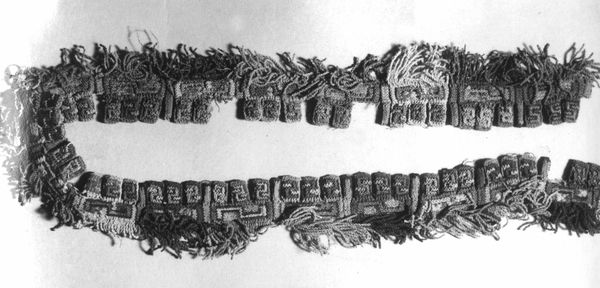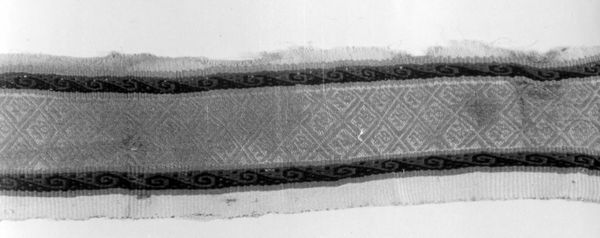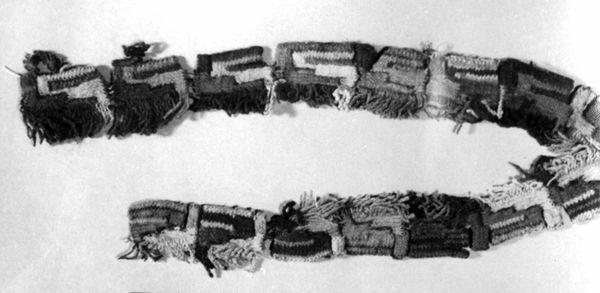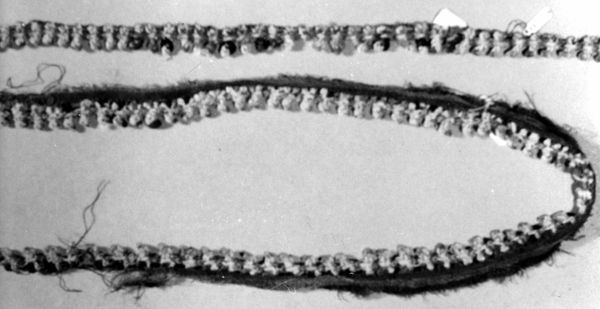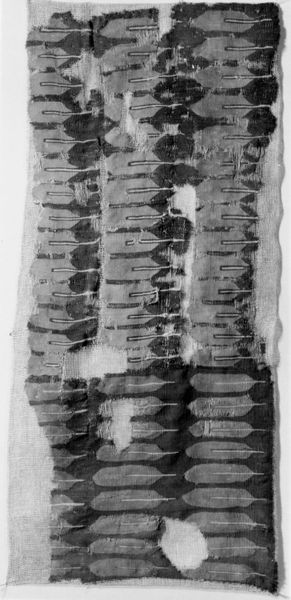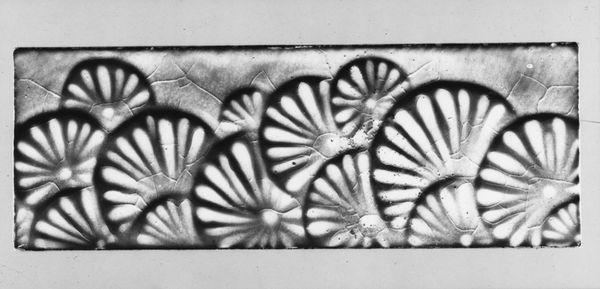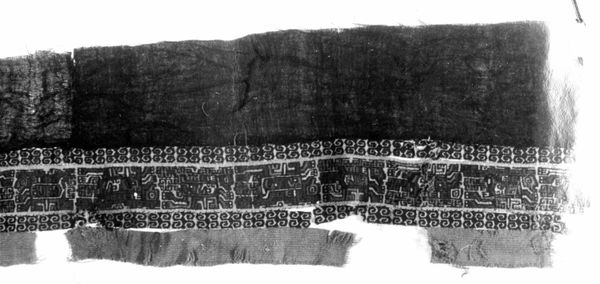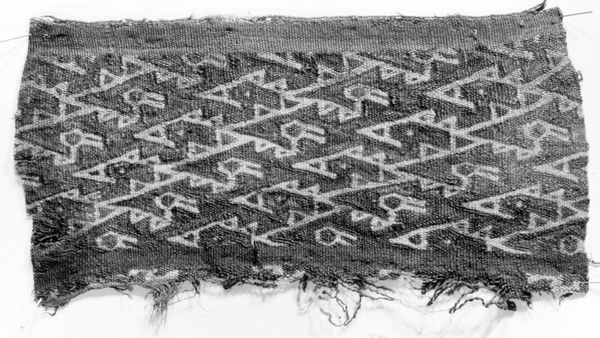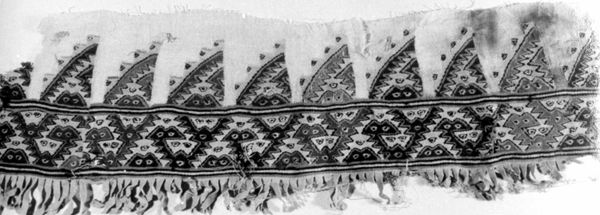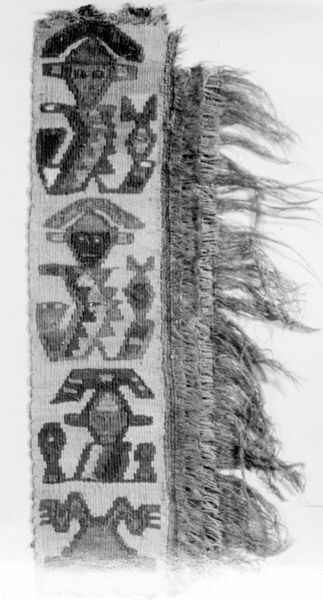
fibre-art, weaving, textile
#
fibre-art
#
weaving
#
textile
#
indigenous-americas
Dimensions: 96.5 × 5.4 cm (38 × 2 1/8 in.)
Copyright: Public Domain
This textile border was made by the Nazca people in ancient Peru, using fibers from camelids like alpacas or llamas, and perhaps cotton. The regular geometric patterns are created through a weaving technique. Though the exact tools used are unknown, similar textiles have been found with simple looms and spindles. The labor-intensive process of turning raw fiber into dyed and patterned cloth would have been a highly valued skill. The colors, now faded, were achieved with natural dyes extracted from plants, insects, and minerals, all contributing to the textile’s visual impact and cultural importance. The fringes could have been ornamental or functional, maybe adding weight to the edge of a garment. Considering the complex processes, materials, and skill that went into making this border, it's a reminder of the ingenuity of ancient cultures. It also urges us to reconsider the boundary between art and craft.
Comments
No comments
Be the first to comment and join the conversation on the ultimate creative platform.
